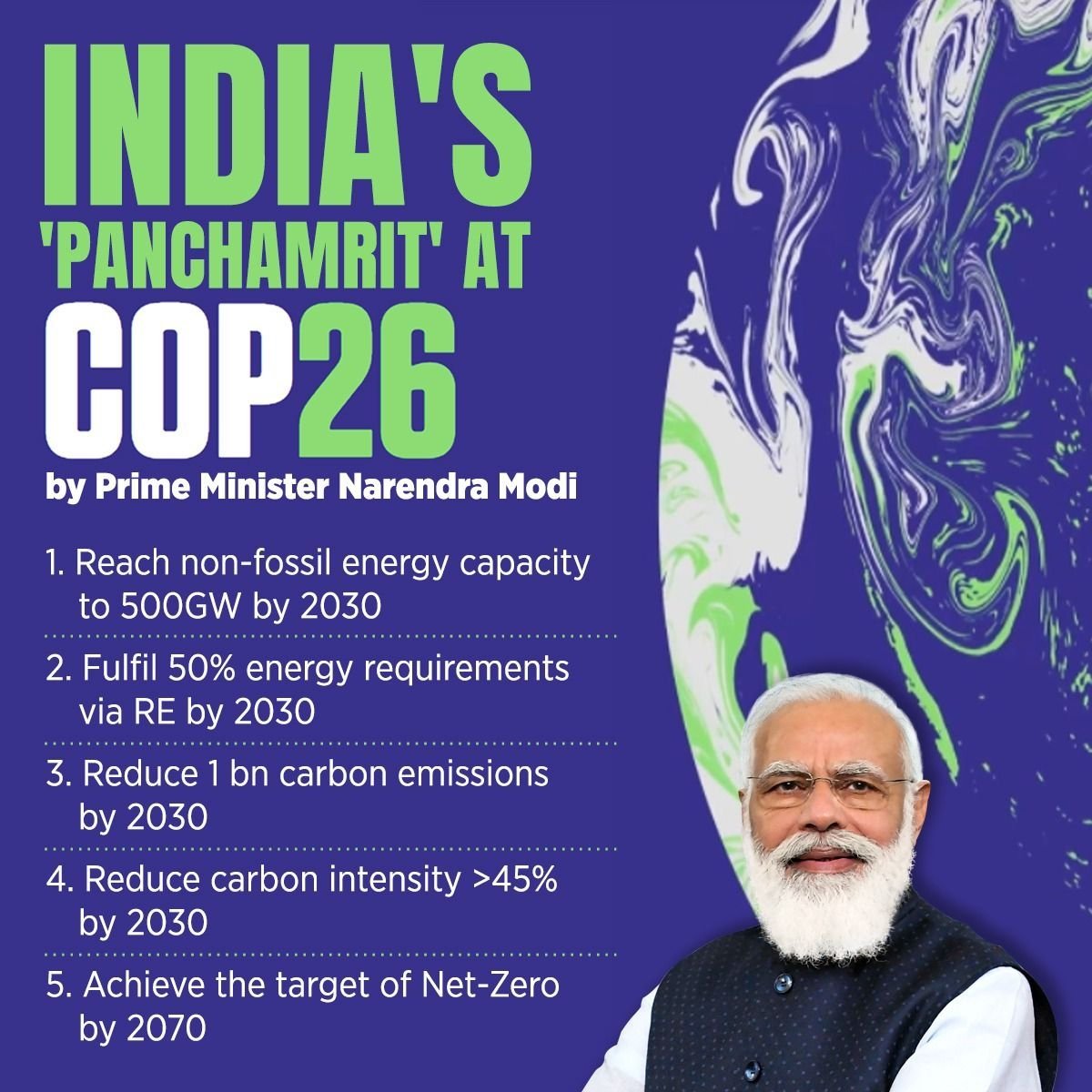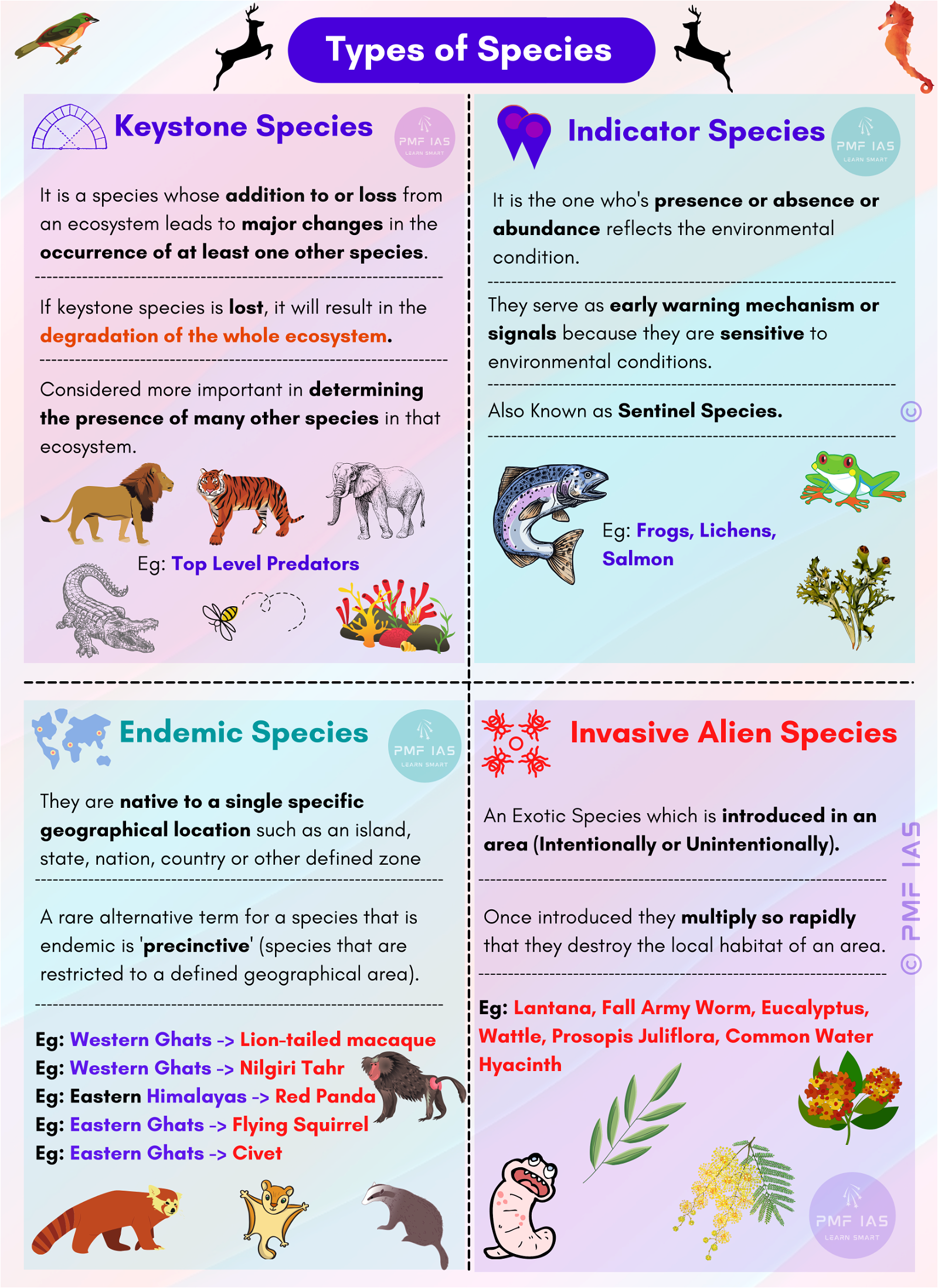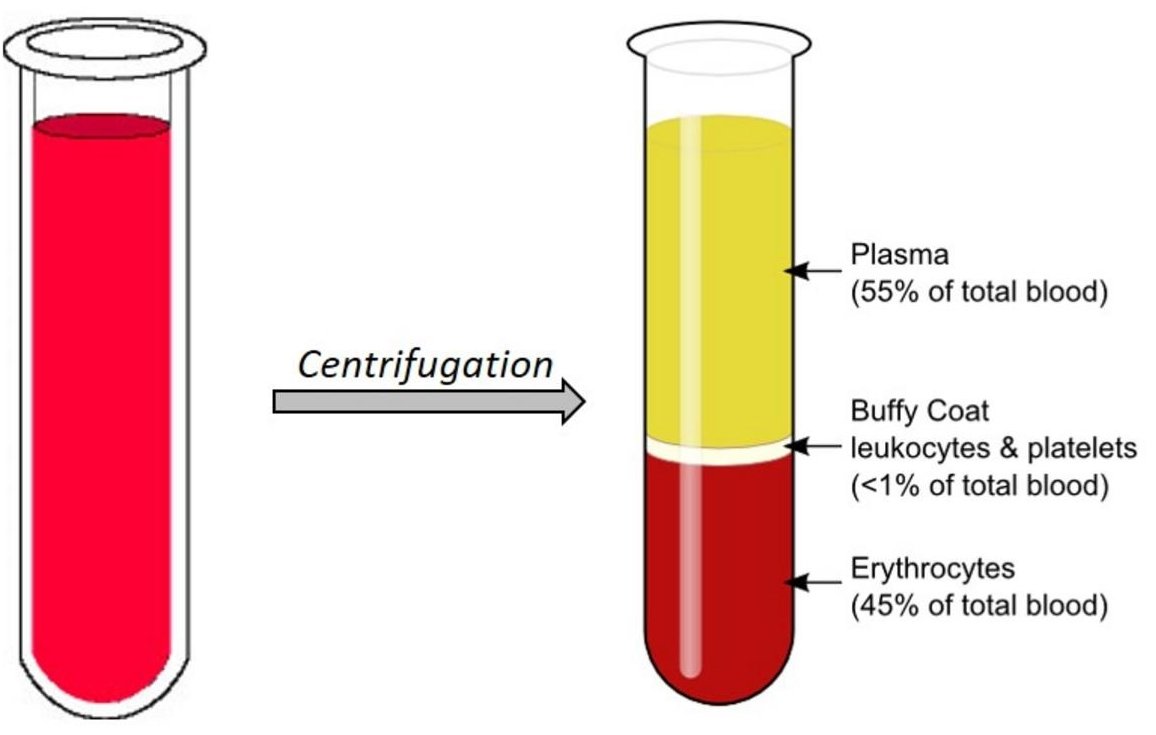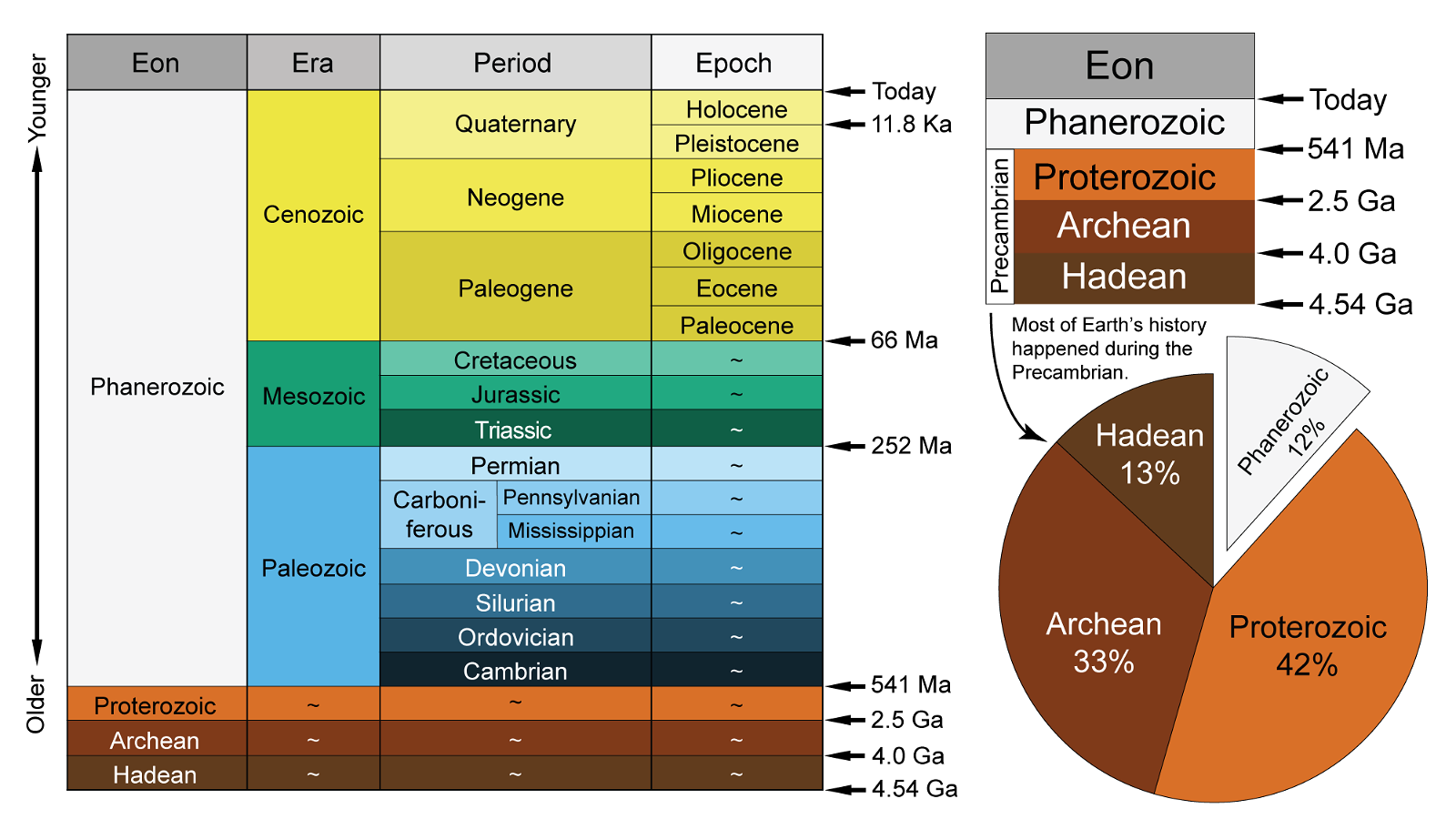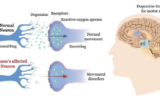
Current Affairs for UPSC Civil Services Exam – May 10, 2024
Subscribers of "Current Affairs" course can Download Daily Current Affairs in PDF/DOC
Subscribe to Never Miss an Important Update! Assured Discounts on New Products!
Must Join PMF IAS Telegram Channel & PMF IAS History Telegram Channel
{GS1 – IS – Population} EAC-PM Paper on Religious Diversity in India
- Context (IE I TOI): A report by the Economic Advisory Council to the PM has said that minorities are thriving in India and not just protected.
- The analysis relied on the Religious Characteristics of States Dataset 2017 to track religious composition across countries.
- The Paper was titled ‘Share of Religious Minorities: A Cross-Country Analysis’.
- The paper analyses changes in minority population shares across countries from 1950 to 2015.
- The study focused only on countries where the majority religion accounted for more than 50 per cent of the total population in 1950.
Findings of the Report
- The share of the Hindu population in India has dipped by 7.82 per cent, while that of Muslims, Christians, Sikhs and Buddhists has seen a rise. The Jain and Parsi communities witnessed a dip.
- Of the 35 OECD countries studied, 25 were from Europe, and the share of majority religious denominations has decreased by 29 per cent in these countries.
- India’s demographic changes, with a dipping majority population and rising minority population, are in line with global trends, as seen in Europe.
- However, these changes stand out when compared to India’s neighbours, highlighting the unique nature of India’s demographic shift.
- The rise in the share of minorities suggested the net result of policy actions, political decisions and societal processes provided a conducive environment for increasing diversity in society.
Some Trivial Facts
|
PM’s Economic Advisory Council (PMEAC)
- The Economic Advisory Council to the Prime Minister (PMEAC] is a non-constitutional, non-permanent and independent body constituted to give economic advice to the GoI, specifically the PM.
- It was established to offer diverse perspectives on key economic issues to help raise awareness within the government.
- The Council is often restructured with different organizational formats, led by internationally recognized economists.
- Established in September 2017 for two years, it replaced the former PMEAC, chaired by former RBI governor C Rangarajan during Prime Minister Manmohan Singh’s tenure.
Organisation
- A Chairperson chairs the PMEAC, which consists of eminent economists as members.
- It now has a Chairperson, a Member Secretary and two part-time members.
- It is supported in its functions by a team of officials and administrators.
- There is no fixed definition of the exact number of members and staff of the PMEAC.
- For administrative, logistic, planning and budgeting purposes, the NITI Aayog replaced the erstwhile Planning Commission to serve as the Nodal Agency for the PMEAC.
{GS2 – IR – UN} UN Counter-terrorism Trust Fund
- Context (TOI): India has donated $500,000 to the UN counter-terrorism trust fund.
- With this recent contribution, India’s total financial support to the trust fund is now $2.55 million.
- India’s contribution supports the United Nations Office of Counterterrorism (UNOCT) ‘s global programs on countering the financing of terrorism (CFT) and countering terrorist travel (CTTP).
- These programs aim to enhance the capacities of member states in eastern and southern Africa.
{GS3 – Agri – Crops} Biocontrol Agent against Foot Rot disease
- Context (IE): Punjab Agricultural University has come up with biocontrol agent Trichoderma asperellum to combat ‘foot rot’ disease, prevalent in Basmati rice varieties.
- Foot rot or Bakane disease, is a fungal disease that affects Basmati rice crops, particularly at the seedling stage, though it might also cause infection after transplantation in case infected seedlings are transplanted.
- It is caused by the fungus Fusarium verticillioides, a soil-seed-borne pathogen that spreads the infection through the plant’s root and eventually colonises the stem base.
- Impacts: Infected seedlings first turn pale yellow, then elongate and dry up, and eventually (usually) die.
- Treatment: Currently, seedlings are treated with Trichoderma harzianum before sowing and transplantation. Seeds are also treated with fungicides such as Sprint 75 WS before sowing. However, these are harmful to the soil, and can be toxic for consumers of the rice.
{GS3 – Envi – Air Pollution} Nitrogen Dioxide (NO2) *
- Context (DTE): A study by Stanford University highlighted health risks associated with gas and propane stoves. These appliances can significantly elevate indoor air pollution levels of nitrogen dioxide (NO2), a known respiratory pollutant.
- The research discovered that homes using gas or propane stoves expose residents to an average annual increase of 4 parts per billion (ppb) of NO2.
- This is concerning because the increase is equal to 75% of the WHO recommended safe limit for indoor and outdoor NO2 exposure.
- The study affirmed that cooking food emits minimal to no NO2, and electric stoves produce none.
Mitigation Strategies
- Effective range hoods that vent outdoors.
- Ensuring proper ventilation while cooking.
- Consideration of alternative cooking appliances, such as electric stoves or induction cooktops.
About Nitrogen Dioxide (NO2)
 |
{GS3 – Envi – CC Impacts} Urban Heat Islands
- Context (IE): Around 80% of the people in India have experienced heat waves in the first 15 days of summer and are disproportionately affected by urban heat stress.
- Urban heat island is a temporary phenomenon in which certain pockets within a city experience higher heat load than its surroundings.
- This is due to rising ‘concretisation’ in urban spaces where heat trapped is unable to dissipate easily.
- Urban heat islands result from complex interactions between built environments, natural factors, and human activities.

Credit: Tarumahiman
Factors Contributing to Urban Heat Islands (UHI)

Credit: Semantic Scholar
- Urban deserts: Cities can be thought of as virtual deserts with almost no vegetation and materials that are almost completely impermeable to rain (for e.g. Asphalt). This combination leads to a lack of evapotranspiration, which increases sensible heat.
- Urban canyons: The tall canyons formed by city buildings trap radiant energy in their walls, blocking wind flow that would have otherwise provided ventilation. This “canyon effect” blocks heat emissions from being released into the atmosphere, contributing to increased temperatures.
- Humidity effects: Although there is little difference in the amount of water that cities and countryside retain in their atmospheres, the higher urban temperatures effectively lower the relative humidity (since warm air can hold more water than cold air).
- Urban haze: A haze of air pollution that hangs over many cities can act as a miniature greenhouse layer, preventing outgoing thermal radiation from escaping from urban areas.
- Anthropogenic heat: Heat from the burning of fossil fuels contributes towards increased urban temperatures.
Impacts of Urban Heat Islands
- Economic implications: Increased healthcare costs, decreased worker productivity, rise in volatility of prices of food grains, reduced tourism potential.
- Strain on energy resources due to increased demand for air conditioning and refrigeration, leading to higher greenhouse gas emissions and strain on electrical grids.
- Studies have shown that UHIs can increase electricity consumption for cooling in urban areas by up to 20% compared to non-urban areas.
- Adverse health effects: Heat-related illnesses, such as heat exhaustion and heatstroke, become more prevalent during heatwaves.
- Altered microclimates and ecosystem disruption by altering wind patterns, rainfall distribution, and atmospheric stability, thus affecting urban hydrology and vegetation, leading to reduced evapotranspiration rates, increased stormwater runoff, and decreased water quality in urban streams and rivers.
- Reduced Air Quality through the phenomenon of thermal inversion, which traps pollutants close to the ground. The combination of high temperatures, stagnant air, and increased emissions from vehicles and industrial activities leads to the formation of ground-level ozone, worsening air quality.
Way Forward
- Urban greening and heat-resistant infrastructure: Increasing the number of parks, green roofs, and vertical gardens, using cool roofs and pavements, etc.
- Building Regulations: Implementing building codes and regulations that promote energy-efficient construction, use of heat-reflective materials, and proper insulation can significantly reduce UHI effects.
{GS3 – IE – Banking} Look Out Circulars & Loan Defaulters *
- Context (IE): The Bombay High Court ruled that public sector banks (PSBs) cannot request Look Out Circulars (LOCs) against loan defaulters.
- The ruling quashed the centre’s Office Memoranda (OM) that empowered PSBs to issue LOCs.
- Existing restraint orders issued by competent authorities, courts, Debt Recovery Tribunals, or investigative/enforcement agencies remain unaffected by the court’s order.
Background
- LOCs were issued based on OMs from the Ministry, starting from October 27, 2010.
- In September 2018, a provision was introduced to issue LOCs if an individual’s departure posed a threat to the “economic interest” of the country.
- Later, a new clause empowered the chairperson of the State Bank of India (SBI) and CEOs of other Public Sector Banks (PSBs) to request immigration authorities to issue LOCs against default borrowers.
Reasons for quashing the Office Memoranda (OM)
- The court described these LOCs as “strong-arm tactics” to bypass legal processes. Such tactics violate fundamental rights guaranteed under Articles 14 and 21 of the IC.
- The fundamental right to travel abroad cannot be restricted by executive action without a legal basis.
- Allowing banks to act as judges and executioners violates Article 21 of the IC.
- The government failed to prove that debt had been recovered through the denial of travel permission.
- The court deemed the inclusion of only PSBs (not Private banks) in the LOC issuance to violate Article 14 of the IC and be arbitrary. It disagreed with the distinction between borrowers from PSBs and those from private banks.
About Look Out Circulars (LOCs)
- The Bureau of Immigration of the Ministry of Home Affairs (MHA) issues lookout circulars (LOCs).
- These LOCs allowed authorities at any departure port to prevent PSB debtors from leaving India.
|
Options for Banks After Court Ruling
- Banks are free to seek orders from courts or tribunals to restrain individuals from travelling abroad.
- Banks can also utilise powers under the Fugitive Economic Offenders Act, 2018, where applicable.
{GS3 – S&T – Defence} Fujian: China’s Aircraft Carrier
- Context (TH): China’s third aircraft carrier, Fujian, completed its maiden sea trials successfully.

Credit: AP
- Fujian is an 80,000-tonne supercarrier equipped with electromagnetic catapults for launching aircraft. This technology makes China the 2nd country, after the U.S., to have a supercarrier with such capabilities.
- China is building its fourth aircraft carrier, likely a nuclear-powered supercarrier, to be unveiled soon.
|
To know in detail about India’s Aircraft carrier, Visit India’s Aircraft Carriers.
{Prelims – Envi – Species} Sperm Whales (Physeter macrocephalus)
- Context (HT): Scientists studying sperm whales have discovered that they communicate through a sort of “phonetic alphabet.”

Credit: NOAA Fisheries
- Sperm whales, or cachalots, are the largest-toothed whales. They are named after the waxy substance spermaceti, an oil sac found in their heads that helps them focus on sound.
- Physical description: They are mostly dark grey, with some having white patches on their belly. Some sperm whales turn white as they age.
- Distribution: They are found in all deep oceans, from the equator to the edge of the pack ice in the Arctic and Antarctic.
- Sperm whales are noteworthy for their acoustic activity, which they use to navigate and communicate.
- It has the largest brain of any animal on Earth, more than five times heavier than the human brain.
- Conservation Status: IUCN: Vulnerable | WPA, 1972: Schedule II
- Threats: Entanglement in fishing gear, vessel strikes, pollution and climate change.
{Prelims – In News} AlphaFold – The AI Model
- Context (IE): Google Deepmind has unveiled the third major version of its “AlphaFold” artificial intelligence model.
- It can predict the structure and interactions of all life’s molecules, including proteins and DNA. It marks the first time that a single system has been able to predict the interactions between nearly all molecular types with state-of-the-art performance.
- AlphaFold 3 expands beyond proteins to provide accurate predictions for protein interactions with other biomolecules in living cells – such as DNA, RNA, and small molecules.
- Earlier versions of AlphaFold focused on predicting the 3D structures of 200m proteins, the building blocks of life, from their chemical constituents.
{Prelims – In News} World Migration Report 2024
- Context (DTE): The World Migration Report 2024 was recently released by the United Nations’ International Organisation for Migration (IOM).
- According to the report, by 2050, over 216 million people across six continents are projected to move within their countries due to climate change.
- Migration serves as a coping or adaptation strategy to mitigate the adverse effects of climate change.
- Factors like political power, governance, and globalised food production also contribute to migration.
Climate-Induced Displacement Across Regions
North Africa
- Libya: It faces challenges from the Arab Spring and water scarcity. Natural disasters like the ‘Medicane‘ Daniel in 2023 have further exacerbated challenges in Libya, particularly in cities like Derna.
- Algeria & Morocco: Droughts and wildfires have led to significant displacements.
- Nigeria: In 2022, it experienced the largest number of internal displacements due to disasters in sub-Saharan Africa, mainly caused by floods.
South and East Africa
- In Ethiopia, Somalia, and Kenya, over 2 million people were displaced internally due to drought.
Southern Africa
- Cyclone Freddy, which struck Malawi, Mozambique, and Madagascar in early 2023, displaced over 500,000 people in Malawi alone.
Asia
- Pakistan: Floods in 2022 resulted in nearly 1,700 deaths and over 8 million displacements.
- Bangladesh record-breaking floods in 2022, causing over 1.5 million displacements.
- Central Asia: Increasing desertification, glacial melt, and dam failures have led to displacements.
- Water management issues between countries like Kyrgyzstan and Tajikistan have fueled tensions and clashes.
The Americas, Caribbean and Oceania
- Brazil: Floods in 2022 displaced over 7lakh people.
- Peru declared a state of emergency after cyclone Yaku (2023) caused widespread displacement.
- Chile experienced extremely destructive wildfires in January 2023.
- Cuba: Hurricane Ian in September 2022 caused 80,000 displacements.
- Dominican Republic and Puerto Rico: Hurricane Fiona triggered 94,000 displacements.
- Canada witnessed displacements due to extensive wildfires burning millions of acres by June 2023.
-
Pacific Ocean region: Disasters like tropical cyclones, volcanic eruptions, and droughts frequently cause displacements.
- In 2021, cyclones Ana & Bina hit the Solomon Islands, Vanuatu, and Fiji, leading to displacements.
- They are also vulnerable to slow-onset events like rising sea levels and coastal erosion.
Steps taken to Combat Climate-induced Migration
- In September 2022, more than 10 states in the East and Horn of Africa signed the Kampala Ministerial Declaration on Migration, Environment, and Climate Change.
- Argentina introduced a new humanitarian visa pathway in May 2022 for individuals from the Caribbean, Central America, and Mexico displaced by natural events.
- The United States government planned to provide financial assistance to five Native American tribes in Alaska and Washington for relocation from coastal areas and rivers.
- Pacific Island governments are discussing a regional framework on climate mobility under the supervision of the Pacific Islands Forum.
{Prelims – Sci – Bio – Diseases} FLiRT: The new COVID Variant
- Context (TH | IE): KP.2 and KP1.1, dubbed ‘FLiRT’ variants, belonging to Omicron JN.1 lineage, are linked to new COVID-19 cases in the USA and UK.
- The letters of FLiRT variation are derived from the technical names of the mutations: F and L are included in one, and R and T which is included in another.
- Transmission: It spreads via respiratory droplets of the person to others, or touching infected surfaces such as furniture, etc, or coming in close contact with the person who is sick with this variant.
- Symptoms: Sore throat, cough, congestion, tiredness, headache, muscle or body aches, runny nose, fever or chills, loss of smell and taste, or even breathlessness in extreme cases.
- WHO has reclassified it as a variant of interest and advised close monitoring.
Learn in detail about COVID-19.





![PMF IAS Environment for UPSC 2022-23 [paperback] PMF IAS [Nov 30, 2021]…](https://pmfias.b-cdn.net/wp-content/uploads/2024/04/pmfiasenvironmentforupsc2022-23paperbackpmfiasnov302021.jpg)
